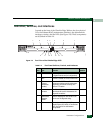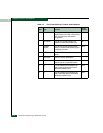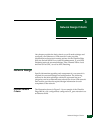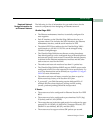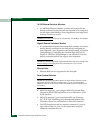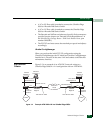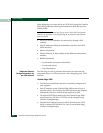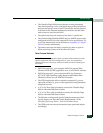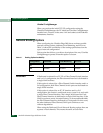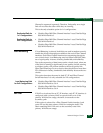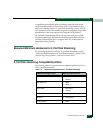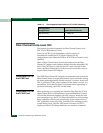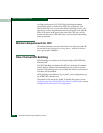
3
Network Design Criteria
3-7
Network Design
• The UltraNet Edge 3000 does not listen to routing broadcasts.
One default gateway can be configured along with multiple host
and network specific static routes. Generally the default gateway
is defined for the Ethernet maintenance interface and the other
static routes are used for the WAN.
• The end-to-end network must have less than 1% packet loss.
• The UltraNet Edge 3000 has SNMP support. SNMP access can be
configured to limit Get or Set requests on a host specific basis. Up
to six Trap destinations can be defined (see
Appendix F, Configure
SNMP, for more information).
• The end-to-end network latency must be less than or equal to
200ms round-trip latency with less than 10% jitter.
Fibre Channel Switches
NOTE: The UltraNet Edge 3000 contains an internal Fibre Channel switch
(FCSW) application and when configured for F_port, an external Fibre
Channel switch is not necessary unless more than two Fibre Channel ports
are needed.
• McDATA supports F_port using the McDATA internal Fibre
Channel Switch (FCSW) application over an ATM WAN interface.
• McDATA supports E_port extension and Device Extension
(FC/SCSI Tape Pipelining) using Brocade and McData Fibre
Channel switches over an ATM WAN interface.
• The FCSW application allows remotely connected N_ports to
login and see other N_ports via this application using standards
compliant services.
• A LC to SC fiber cable is needed to connect the UltraNet Edge
3000 to a Brocade 2000 Series Switch.
• A LC to LC fiber cable is needed to connect the UltraNet Edge
3000 to a Brocade 3000 Series Switch.
• The Brocade switches need specific flash parameters specified
(see the chapter on “Brocade Switch Requirements” in the
UltraNet Edge Storage Router - 3000 Series Release Notes).
• The FCBB card auto-senses the attached port speed and adjusts
accordingly.



